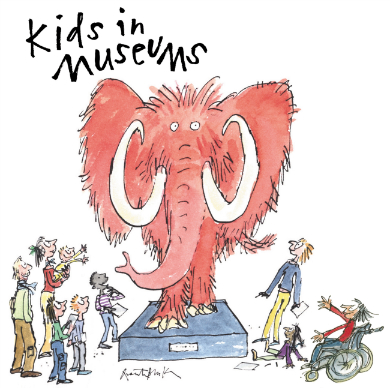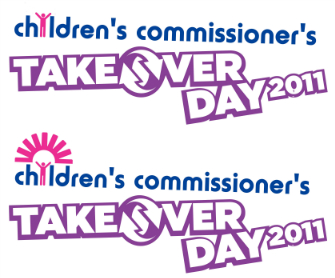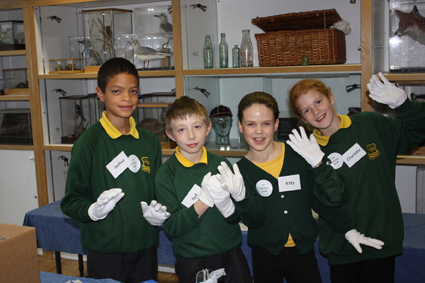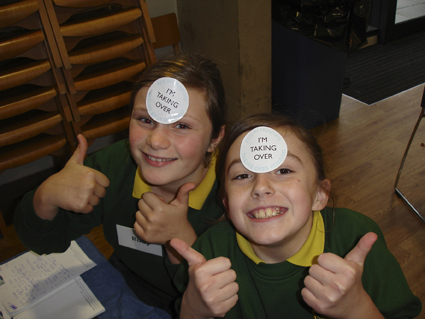Take Over Museum
Following the museum education scene in the United Kingdom for the past seven years, one recurring theme that crops up more and more often has really sparked my interest and inspired me to get my feet wet.
| Juhász Litza |
2012-03-05 07:52 |
 Following the museum education scene in the United Kingdom for the past seven years, one recurring theme that crops up more and more often has really sparked my interest and inspired me to get my feet wet. In the UK it's known as community involvement and it entails handing over at least some of the decision making to the community, to the current and potential visitors. Community involvement means listening to what visitors want, reflecting on their ideas and suggestions and trying to incorporate them into the museum’s everyday life. First widely focused on in the 1970s, community involvement has become a household word with educators in museums, galleries, libraries, archives and at Heritage sites. What does the word “communities” mean in the UK?
Following the museum education scene in the United Kingdom for the past seven years, one recurring theme that crops up more and more often has really sparked my interest and inspired me to get my feet wet. In the UK it's known as community involvement and it entails handing over at least some of the decision making to the community, to the current and potential visitors. Community involvement means listening to what visitors want, reflecting on their ideas and suggestions and trying to incorporate them into the museum’s everyday life. First widely focused on in the 1970s, community involvement has become a household word with educators in museums, galleries, libraries, archives and at Heritage sites. What does the word “communities” mean in the UK?
Basically, it all boils down to a group of people who identify with one another and share some common characteristics. In such a multicultural country as the United Kingdom, “communities” does not only incorporate people living nearby one another, or in this case, near the museum. It can also mean people of a certain age: young adults or even the third age. In addition, it is also concerned with looking at how to engage with people identifying with one or more an ethnic communities.
When involving communities, and the individuals within them, museum employees and volunteers share the whole process of decision making from beginning to end. Since every situation, program, event, exhibition or anything else that happens in a museum or heritage site has its limitations, handing the power over to visitors means letting them know how far the the institution's boundaries might be stretched.
 Late last year I came across one example of community involvement called Take Over Museums, which was posted on the Kids in Museum’s homepage. Take Over Museums began in 2010 as a partnership with the Children’s Commissioner in England. Both organizations advocate promoting the views of children and young people and giving them an active voice and role in their community. They envision that by listening to children and allowing them an active role, the members of society can transform their institutions into a much more child friendly environment where children and adults learn from each other.
Late last year I came across one example of community involvement called Take Over Museums, which was posted on the Kids in Museum’s homepage. Take Over Museums began in 2010 as a partnership with the Children’s Commissioner in England. Both organizations advocate promoting the views of children and young people and giving them an active voice and role in their community. They envision that by listening to children and allowing them an active role, the members of society can transform their institutions into a much more child friendly environment where children and adults learn from each other.
In 2011, Take Over (Museums) Day was held on Friday, November 11. While any organization may participate in Take Over Day, Take Over Museums is an offshoot focusing on one sector in society. How does it work? Participating museums, galleries, heritage sites and historic homes work with children and young people to prepare them for the work they will be doing on Take Over Day. This means that staff at a museum have met the children or young people several times before the actual day, gotten to know them and as a team, together they have planned what role the children will take on during Take Over Day. Kids in Museums posted some examples of work children were involved:
At the River and Rowing Museum in Henley-on-Thames, 12 ten-year-olds chose WW1 objects from the collection, put up a display and even launched it with a press release. ‘My favourite part was placing the objects into the case. I had so much fun. It was really fun wearing the white gloves so we could pick things up,’ said one Year 6 participant.
 At Wolverhampton Art Gallery and Museum, 13 young people provided feedback on they thought worked – and what didn’t. ‘We want more activities for our age group – not under fives, not OAP – but teenagers!’ they said. They also asked for better advertising of what the Gallery does already, so more of their friends know about it. The kids were so inspired by the day they even asked about internships and work placement. ‘We would definitely visit the museum again – due to Takeover,’ they said.
At Wolverhampton Art Gallery and Museum, 13 young people provided feedback on they thought worked – and what didn’t. ‘We want more activities for our age group – not under fives, not OAP – but teenagers!’ they said. They also asked for better advertising of what the Gallery does already, so more of their friends know about it. The kids were so inspired by the day they even asked about internships and work placement. ‘We would definitely visit the museum again – due to Takeover,’ they said.
 Those familiar with country-wide initiatives in the United Kingdom, appreciate the length to which overseeing bodies go to provide professional assistance at the touch of a button to anyone interested in getting involved. Usually organizations do it in the form of down-loadable materials which present both guidance and resources for educators and program planners. These include a variety of items any institution needs. They include: information for organizations, flier and press release templates as well as feedback questionnaires, a “how to” guide and of course the logos to be used on every available surface including advertising materials, staff T-shirts, feedback sheets and certificates of appreciation.
Those familiar with country-wide initiatives in the United Kingdom, appreciate the length to which overseeing bodies go to provide professional assistance at the touch of a button to anyone interested in getting involved. Usually organizations do it in the form of down-loadable materials which present both guidance and resources for educators and program planners. These include a variety of items any institution needs. They include: information for organizations, flier and press release templates as well as feedback questionnaires, a “how to” guide and of course the logos to be used on every available surface including advertising materials, staff T-shirts, feedback sheets and certificates of appreciation.
Interested in dipping into a community involvement project? Would you like to engage with your local community? Or maybe work specifically with an ethnic minority in Hungary? Here's a way to start small with a one day program. If you or the organization you work with has already done
something similar and would like to share your experience, you comments are welcome.